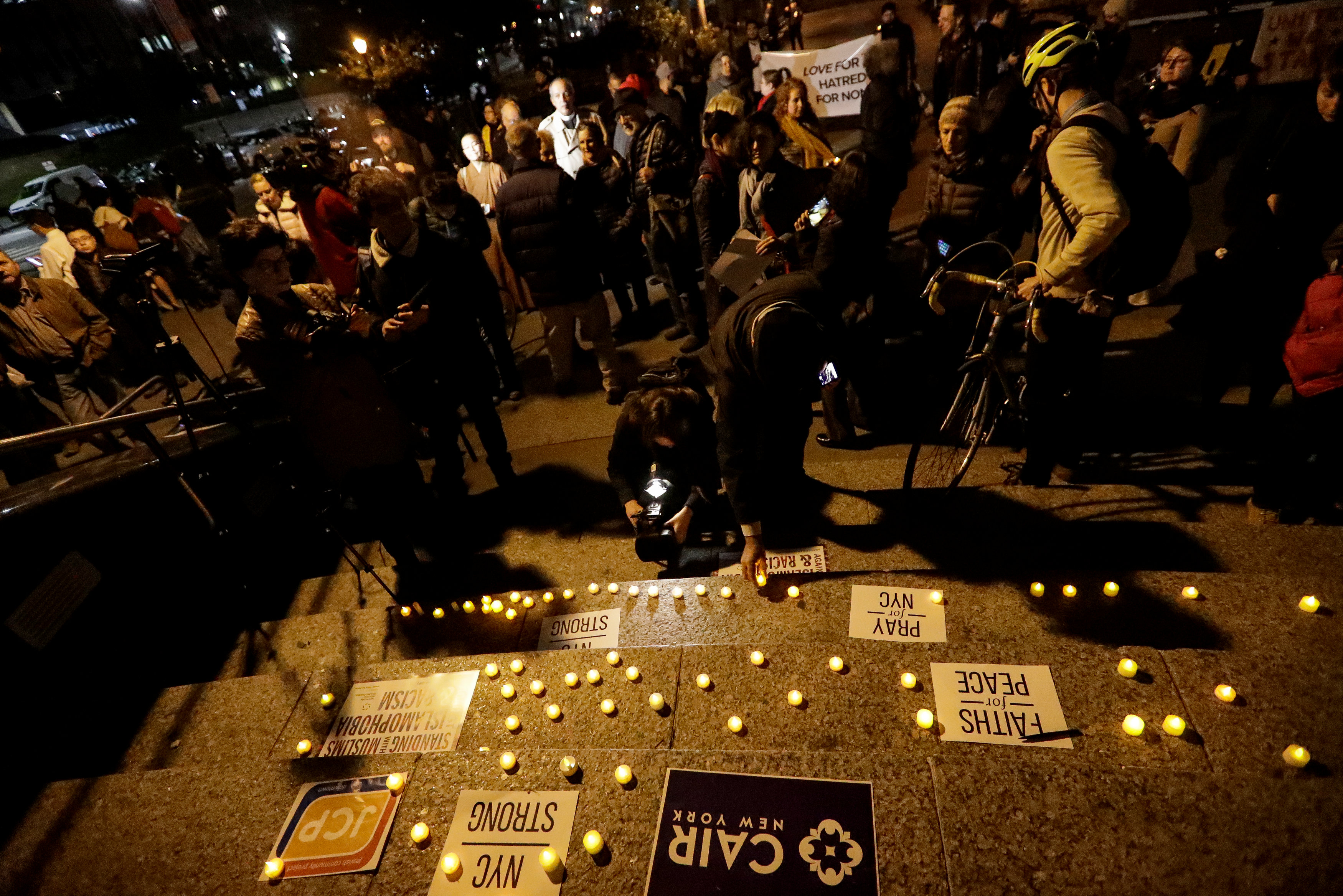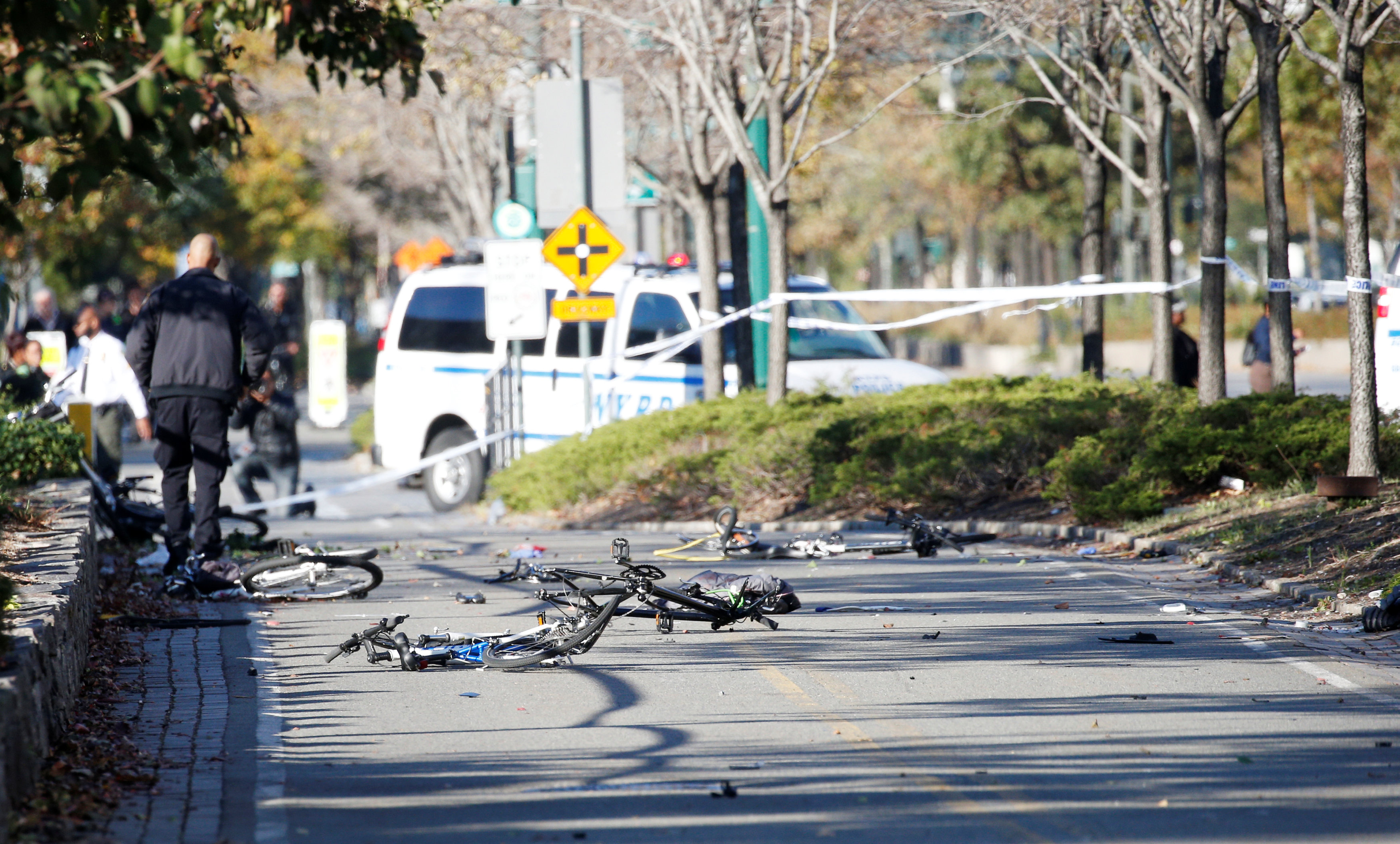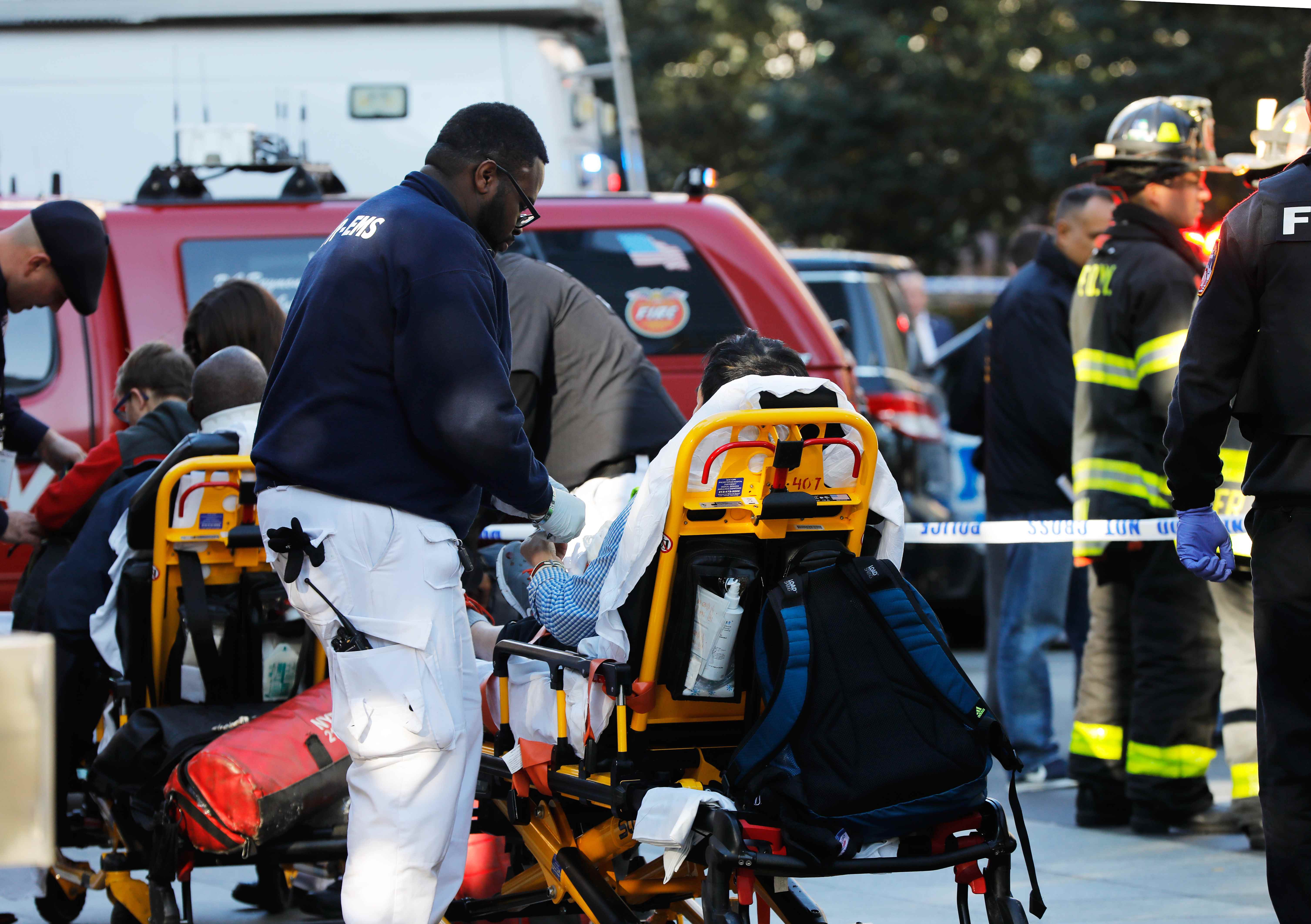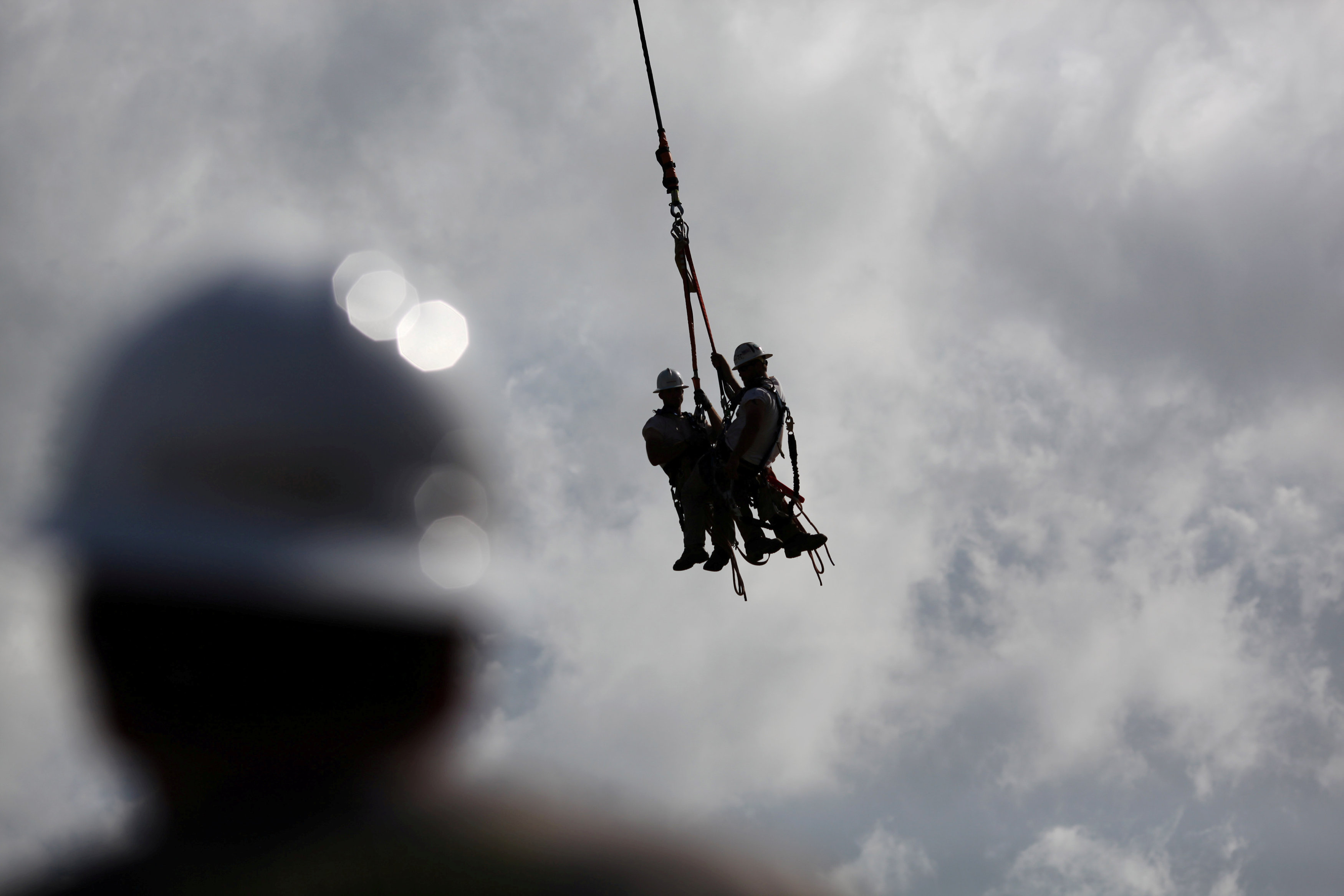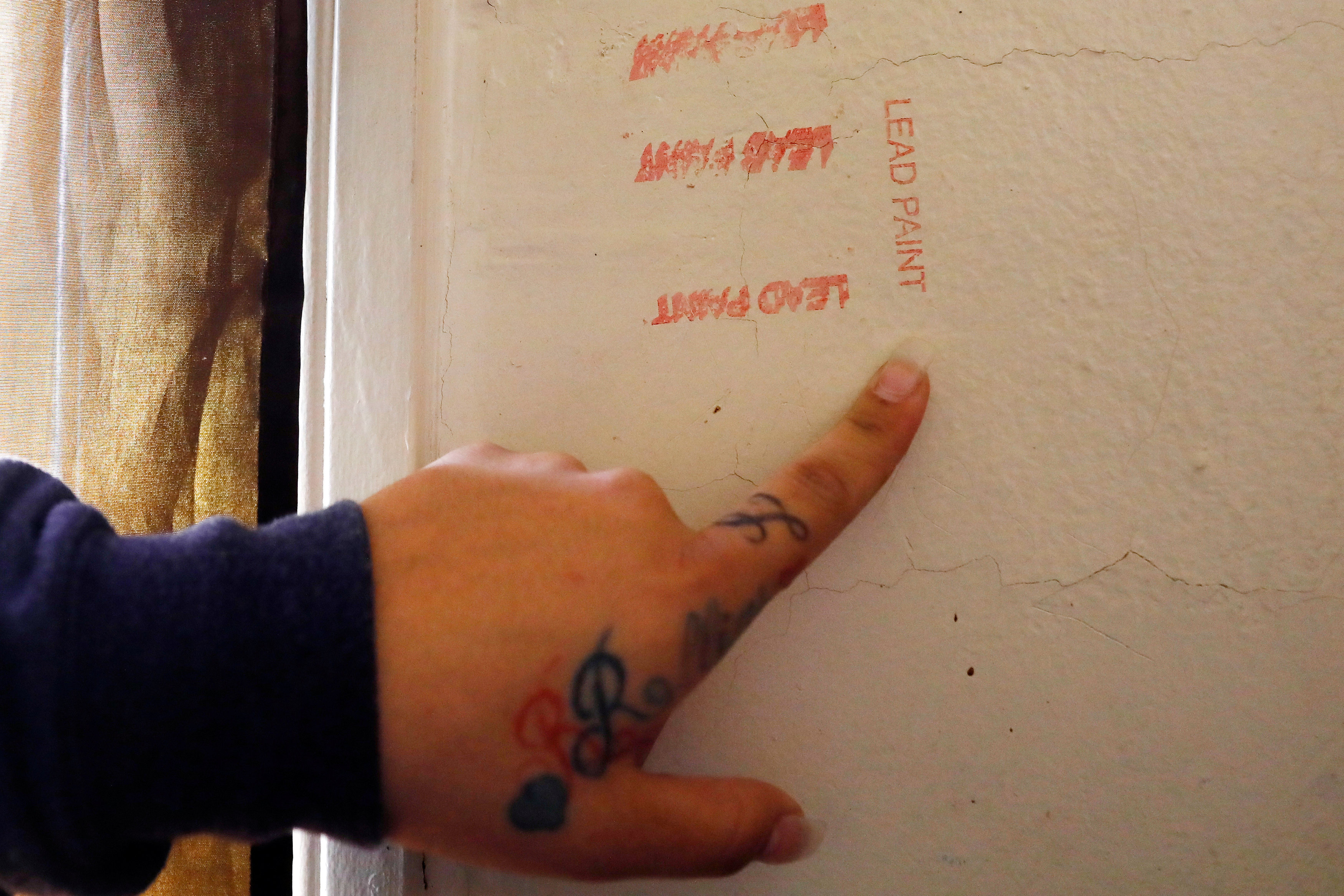
By Joshua Schneyer and M.B. Pell
NEW YORK (Reuters) – In public health circles, New York City is known for its long war on lead poisoning.
The city outlawed residential lead paint in 1960, 18 years before a national ban. A 2004 housing law targeted “elimination” of childhood lead poisoning within six years. The city offers free lead testing in housing, vows to fix hazards and bill landlords when necessary, and has seen childhood exposure rates decline year after year.
Yet inspectors didn’t visit the Brooklyn apartment where Barbara Ellis lived until after her twin daughters tested high for lead three years in a row, she said. They found peeling lead paint on doors and windows. The girls required speech and occupational therapy for their developmental delays, common among lead-exposed children.
“Their words and speech are still a little slurred,” Ellis, a subway conductor, said of daughters Kaitlyn and Chasity, now 6. Tired of feuding with their landlord, they found new lodging in Harlem.
The family’s plight is not uncommon.
Areas of high lead exposure risk remain throughout America’s largest and richest city, a Reuters exploration of blood testing data found. In the first examination of its kind, reporters obtained New York childhood blood testing data down to the census tract level – neighborhood areas with some 4,000 residents apiece. In densely populated New York, a tract often covers several square blocks.
While poisoning has nearly been eliminated in many neighborhoods, Reuters identified 69 New York City census tracts where at least 10 percent of small children screened over an 11-year period, from 2005 to 2015, had elevated lead levels.
That is twice the rate found across Flint, Michigan, during the peak of its notorious water contamination crisis in 2014 and 2015, where the Centers for Disease Control and Prevention found 5 percent of children’s tests were high.
The risk areas spanned New York neighborhoods and demographic groups. Peeling old paint is a conspicuous hazard, but reporters tracked other perils hiding in plain sight, from leaded soil and water, to dangerous toys, cosmetics and health supplements.
In 2015, 5,400 city children tested with an elevated blood lead level, 5 micrograms per deciliter or higher, New York’s most recent annual report on lead poisoning showed. More than 800 had levels at least twice that high.
Previously undisclosed data explored by Reuters offers a hyper-local look at neighborhood areas where the city has fallen short of its eradication goal.
“New York’s prevention program is renowned, so the fact it still has pockets like these shows how challenging this issue is on a national scale,” said Patrick MacRoy, a former director of Chicago’s lead poisoning prevention program.
Reuters found:
• A 2004 housing law co-sponsored by Bill de Blasio, now the mayor, targeted scofflaw landlords. But the city isn’t policing two key provisions that require landlords to find and fix hazards, sometimes waiting until children get poisoned before taking action.
• The areas where the most children tested high are in Brooklyn, including neighborhoods with historic brownstones and surging real estate values, where construction and renovation can unleash the toxin. The worst spot – with recent rates nearly triple Flint’s – was in a Hasidic Jewish area with the city’s highest concentration of small children.
• An affluent area near Riverside Park in Manhattan’s Upper West Side has had rates comparable to Flint’s.
• Reporters were able to buy dangerous leaded products in city shops, including children’s jewelry. One item, a cosmetic marketed for use around children’s eyes, tested with levels 4,700 times the U.S. safety standard. It was labeled lead-free.
• Reuters purchased other items subject to New York lead warnings through online giants Amazon and EBay, which later pulled the items from their websites.
• Soil testing in Brooklyn backyards and a park detected lead levels comparable to some sites designated under the federal Superfund toxic-cleanup program.
While exposure rates have dropped citywide – by up to 86 percent since 2005 – the number of children meeting New York’s criteria for lead poisoning, twice the CDC’s elevated threshold, barely budged between 2012 and 2015.
“Unfortunately, nationally and locally, we are beginning to see signs there is a leveling off in what was once a steep downward trend,” said Rebecca Morley, a housing expert who co-authored a recent report calling for more aggressive national lead abatement policies.
In a statement, City Hall spokeswoman Olivia Lapeyrolerie said comparisons between New York and Flint are “alarmist and inaccurate,” given the city’s sharp declines in lead poisoning and aggressive prevention efforts.
But Morley, while crediting the city’s progress, said the data show “extreme pockets of poisoning remain.”
New York is just one of hundreds of American communities struggling with poisoning. In a two-year investigation, Reuters has now documented 3,810 census tracts or zip code areas across 34 U.S. states where recent high childhood lead test rates have been double those found in Flint.
There’s no safe level of lead in a child’s blood. Exposure is linked to brain damage, lower IQ, behavioral disorders, and lifelong health impacts.
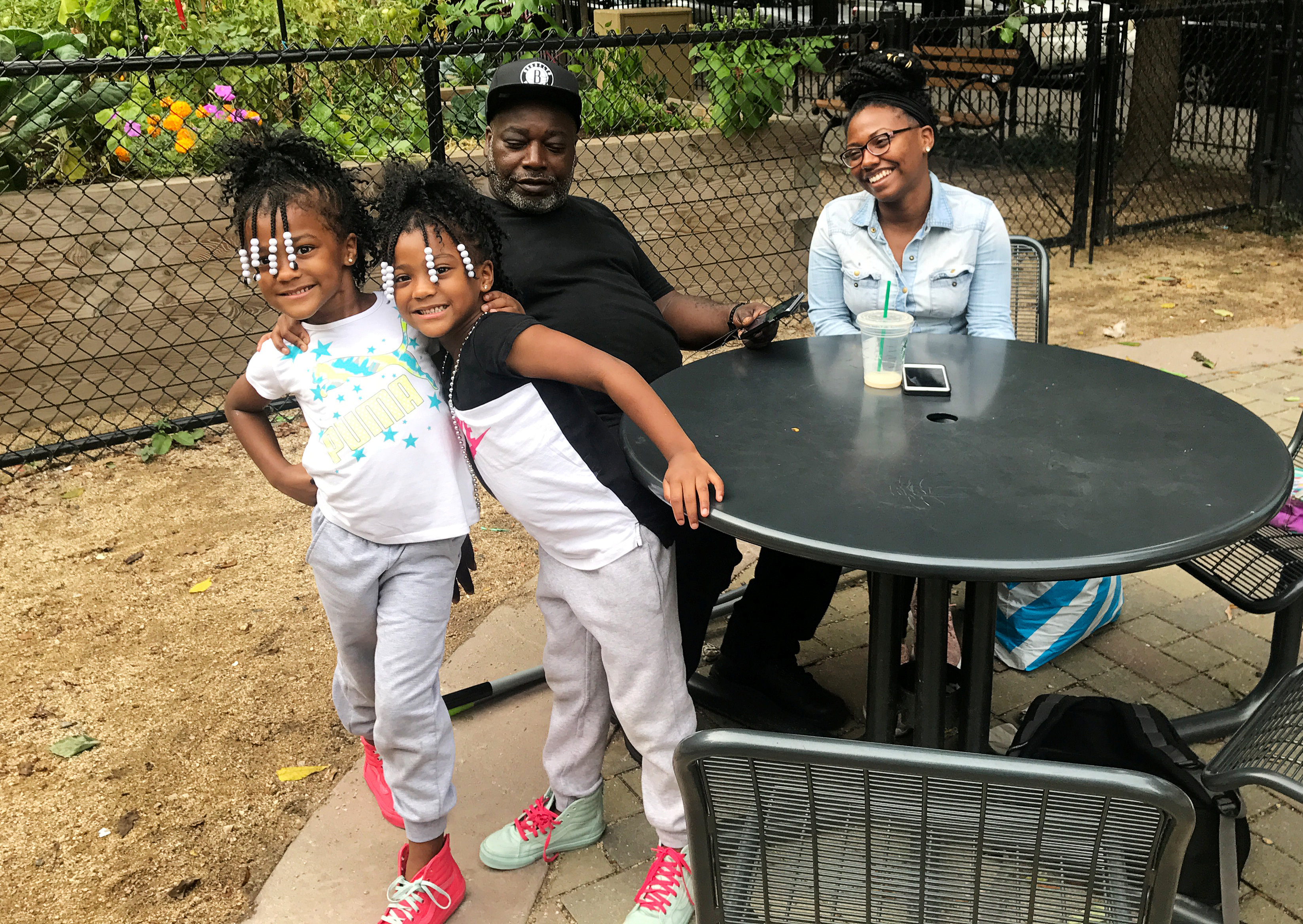
Six-year-old twins Kaitlyn and Chasity Ellis, who were exposed to lead in a Brooklyn apartment, pose with their mother Barbara Ellis (R) and grandfather Ruden Ellis in a park in Harlem – where the family now lives – in New York City, U.S. September 20, 2017. REUTERS/Joshua Schneyer
A QUESTION OF ENFORCEMENT
Seventy percent of New York’s housing stock was built in the 1950s or earlier, when lead was still common in paint. A toddler can be poisoned by swallowing a dime-sized flake of lead paint, or by ingesting paint dust.
“Housing is a main way that young kids get poisoned,” said Deborah Nagin, director of the city’s lead poisoning prevention program. “It’s very important that lead paint hazards, when we identify them, don’t sit around.”
Nagin’s health department division works closely with New York’s Housing and Preservation Department, HPD, whose 400 inspectors are trained to detect lead perils.
A 2004 housing code, Local Law 1, championed by then City Council member de Blasio, gave HPD broad authority to cite landlords for paint hazards and get them fixed quickly. Since then HPD has issued more than 230,000 lead paint violations to landlords.
But its inspectors aren’t able to visit all older housing in a city with more than 2 million tenant-occupied units. And the law’s explicit goal – elimination of poisoning – remains elusive seven years past its 2010 target date.
Among the reasons: There is little or no city enforcement of two provisions of the law, designed to make private landlords responsible for preventing poisoning.
One requires landlords to conduct annual lead paint inspections in pre-1960 housing units where small children live, fix hazards and keep records. The other requires them to “permanently seal or remove” lead paint from spots like windows and door-frames – so-called friction surfaces, where paint often breaks down – before new tenants move in.
Reporters reviewed the past 12 years of HPD violation records and found the agency hasn’t cited a single landlord for failure to conduct the annual inspections. Only one was cited for failure to remediate friction surfaces between tenants, in 2010.
“If the city’s not going to nail a few people for failing to do this, then no one is going to pay attention to these requirements,” said Matthew Chachere, a lawyer with anti-poverty group Northern Manhattan Improvement Corporation, who helped draft the 2004 law.
Mayor de Blasio declined comment.
Rafael Cestero, a former HPD commissioner under Mayor Michael Bloomberg, said the measures would be hard to enforce. “There has to be some realism in what we expect a government agency to actually do,” Cestero said. The department focuses on paint violations its own inspectors find, he said, often in response to tenant complaints.
CONEY ISLAND KIDS
In a statement, City Hall called its complaint-based enforcement system “highly effective” at reducing poisoning.
Yet it doesn’t always work, leaving some families to fend for themselves until a child gets poisoned, Reuters found.
In a 116-year-old building in Coney Island, Brooklyn, unit 2R’s grimy walls are marked with “LEAD PAINT” stamps next to two children’s beds, where inspectors recently found the toxin.
HPD records show the cramped apartment has 163 outstanding housing code violations.
During a reporter’s recent visit, the power was out and the building’s common areas were scattered with rodent droppings. In an apartment, a gas kitchen oven was jerry-rigged to provide heat.
Back in 2015, when Natalia Rollins moved here from a homeless shelter, the mother of two felt lucky. A city-sponsored voucher program, CITYFEPS, helped place her in a $1,515-a-month apartment and covered much of the rent.
Rollins, 25, soon grew scared for her baby boys. There was peeling old paint, a ceiling cave-in, roach, rodent and bee infestations, buckling floorboards, a broken window.
“I hated living in shelters, but nobody should have to live like this either,” said Rollins, a daycare worker. “The landlord would just ignore my calls. When you’re on a voucher you’re treated differently.”
Rollins says she reported housing concerns through the city’s 311 hotline dozens of times. Inspectors visited, but didn’t initially test for lead.
Two months ago her son Noah, 2, was diagnosed with lead poisoning. After receiving his test result, the city Health Department quickly swooped in and found the apartment rife with paint hazards.
Noah’s language is developing, but Natalia worries about his acute sensitivity to noises and his pica behavior, a tendency to eat non-food items. Natalia, Noah and older brother Randy, who is autistic, are now staying in a Bronx safe house for lead poisoning victims operated by Montefiore Hospital.
Ervin Johnson, Rollins’ Coney Island landlord, said the apartment was in “excellent condition” when she moved in. “If her kid got exposed to lead, it probably came from somewhere else,” he said.
But the city says most poisoned children are exposed at home, and records show Johnson’s building has been on the citywide list of the 200 “most distressed” multi-unit dwellings since 2007. “This landlord has repeatedly failed their duty to safeguard our youngest New Yorkers,” the city said.
Lapeyrolerie said the city is now pressing Johnson to “immediately” address the building’s violations and working to find Rollins another apartment.
Lapses in public housing have also come to light. For years, the city’s public housing authority, NYCHA, failed to conduct required annual lead inspections in older public housing, an ongoing federal investigation found.
“We can and must do better,” NYCHA spokeswoman Ilana Maier said.
Citywide, the rate of screened children showing a high blood test in 2015 was 1.7 percent, below the CDC’s estimated national average of 2.5 percent.
Yet rates can vary wildly. A tract on the well-to-do Upper West Side of Manhattan – adjacent to Riverside Park between 105th and 109th Streets – had rates similar to Flint’s even in recent years. The area features grand old buildings and multi-million dollar apartments, where renovations could put children at risk if lead safety practices aren’t followed.
WILLIAMSBURG WOES
Decades ago, Williamsburg, Brooklyn, was a low-rent and largely industrial area. Today, its spacious lofts and privileged perch across from downtown Manhattan attract the well-heeled.
Working-class residents remain, too, including thousands of Hasidic Jews from the Satmar sect, who have settled in the neighborhood’s southern zone since World War II. With their distinctive dress and traditions, the Hasidim’s orthodox lifestyle strikes a contrast to the hipster glitz encroaching nearby.
Hasidic Williamsburg suffers alarming rates of childhood lead poisoning, ranking as the riskiest spot Reuters found citywide.
Across three southern Williamsburg census tracts, as many as 2,400 children tested at or above the CDC’s current elevated lead threshold between 2005 and 2015. In one, 21 percent of children tested during this period had high lead levels. Rates in the most recent years were lower, but still above Flint’s.
On Lee Avenue, boys wearing black hats and coats stream out of yeshivas, while women shop in kosher markets and kibitz in Yiddish in front of old brownstones, many built around 1900.
“When I saw the numbers I freaked out,” said Rabbi David Niederman, head of the United Jewish Organizations of Williamsburg. “The concentration of old housing and the number of children in them are big factors.”
In Hasidic Williamsburg, around 25 percent of the population is age five or younger, compared to about 6 percent citywide.
In recent years, city health workers homed in on the poisoning cluster. UJO and other groups helped health officials conduct outreach, distributing lead awareness pamphlets in Yiddish, urging clinics to boost screening, and holding meetings for residents and landlords.
As recently as 2015, one area tract had a rate of 13 percent, the highest in the city. It’s too early to tell whether rates have since dropped.
DANGERS ON STORE SHELVES
Newly mobile toddlers are the most common lead victims, but school-aged kids and adults are also vulnerable.
Recent testing at the city’s public schools showed more than 80 percent had at least one water outlet with lead levels above the Environmental Protection Agency’s standard of 15 parts per billion. New York public radio station WNYC mapped those results. Faucets that test high are shut off pending repairs, but leaded water lines remain common in New York buildings.
Consumer products are another concern. This year, lead safety advocate Tamara Rubin documented several varieties of the wildly popular fidget spinner toy that contained lead.
And in New York’s popular bodegas, other dangerously leaded products can be found on shelves.
Reporters bought several products that can be used by children or pregnant women from area shops, ordered others from online vendors, and sent 13 items for testing at an accredited laboratory. Six had lead levels exceeding consumer product safety standards.
In Jackson Heights, Queens, a vibrant cauldron of the city’s diverse immigrant populations, scores of small shops sell toy jewelry.
Two items Reuters had tested, a butterfly hairpiece and a glittery earring and beret set, each had lead content above the 100 parts per million U.S. safety standard for toys. Both were Chinese imports. One was labeled “lead-safe.”
The city health department sometimes conducts sweeps, seizing dangerous products or ordering shops to destroy them. It recently found Mexican lead-glazed pottery and issued a public advisory.
But some shopkeepers aren’t aware of the warnings, or ignore them.
In the southern section of Brooklyn’s Ditmas Park area, more than 500 children tested high for lead from 2005 through 2015. Many families in the area emigrated from Pakistan and Bangladesh.
In New York, children of South Asian descent are found to have especially high blood lead levels more often than other children. Sometimes, the poisoning can be linked to imported products.
A string of bright blue, red and gold tubes containing eyeliner – known as ‘surma,’ ‘kajal’ or ‘kohl’ – can be found in many Ditmas Park shops. The cosmetic is sometimes applied to children and touted to improve eye health.
Two varieties reporters bought, both marked lead-free, had unsafe lead levels.
The label for Hashmi Surmi Special liquid, made in Pakistan, says it contains “0.00 percent” lead. Lab testing showed 4.7 percent lead, or 4,700 times the Food and Drug Administration safety standard for cosmetics.
The Hashmi brand website says its surma eyeliner should be used by little ones “right from their childhood to prevent stress on sight.”
Manufacturer A.Q. & Co acknowledged the product contains a lead compound, but said it’s safe when “used externally.”
Health departments disagree. Across the United States, several have linked use of surma to childhood poisoning cases.
New York City has warned against using or selling these products, and FDA guidance says they are illegal to import.
When reporters returned to the Bisillah Grocery Store where they bought the Hashmi eyeliner, a shopkeeper said he’d stopped sales months ago, after a customer had an “allergic reaction.” Reminded of a far more recent sale to a reporter, he said, “You must have bought one of the last bottles.”
The Hashmi eyeliner was still available in several other shops nearby.
Other products U.S. health departments have warned about were easy to find online for delivery to New York City doorsteps.
Reuters purchased leaded Indian Ayurvedic medicines from vendors on Ebay and Amazon.
One of them, Ovarin, is touted to improve women’s reproductive health. It was shipped from a vendor in India via Amazon.com Marketplace. “A Boon to the Womanhood,” its online marketing said. Lab testing showed it contains enough lead to potentially harm mother and unborn child when taken at the suggested dosage.
Its maker, Ban Lab, didn’t respond to interview requests.
Amazon.com removed the product from its website after hearing from Reuters that it was subject to health warnings.
Another product, Zandu brand Maha Yograj Guggul, indicated for joint pain and other ailments, was purchased from a vendor in New Jersey via Ebay.com and tested high for lead.
Manufacturer Emami Group acknowledged the product contains lead, as required by Indian regulations for certain Ayurvedic formulas. The product should only be taken under a doctor’s supervision, its packaging says.
Ebay said it would prohibit sale of the item. Amazon and Ebay said they continually monitor products for safety concerns.
OVERHEAD, UNDERFOOT
In Queens, the city subway’s Number 7 train rumbles overhead on an elevated track.
Last year, a painters trade union said it discovered that lead paint has been raining down on bustling Queens neighborhoods from the subway’s century-old structures. A Brooklyn federal judge set a hearing for this December to consider whether to declare a public health emergency.
Poisoning risks also lurk underfoot in some city areas, where past industrial or vehicle emissions, trash incineration, and runoff from buildings with old paint have tainted the soil.
On a late summer evening, reporters conducted soil testing with help from researchers along a path in McCarren Park, a popular family destination in Greenpoint, Brooklyn.
Columbia University Environmental Sciences graduate student Franziska Landes has been testing soil around the former industrial neighborhood for months. Among the scores of backyards Landes has tested, most have had at least one reading above the EPA’s 400 parts per million lead safety threshold for areas where children play.
Aiming a futuristic-looking XRF analyzer gun into the soil, Landes quickly found one spot, along a jogging path, whose reading was five times that level.
“Wow, that’s a high one,” Landes said. Several other readings on the same path were lower, but still above the EPA threshold.
Nagin, director of New York’s lead-poisoning program, said her department hasn’t usually prioritized soil risks in an urban environment where children’s access to yards is limited. She recently met with Columbia researchers and is taking a deeper look.
Soil researcher Joshua Cheng, a professor at Brooklyn College, said more vigilance is needed. Residents in affected areas should avoid tracking dirt into homes, wash children’s hands often, and place clean topsoil in spots testing high, he said.
“The lead levels found in Brooklyn backyards are often similar to areas where there has been past lead smelting activity,” Cheng said. “They’re comparable to Superfund sites.”
Sarah DuFord, a mother of two, was among the Greenpoint residents who invited reporters into her backyard to test.
One reading was below the EPA threshold, but others were around four times that level.
“This confirms my fears,” she said. Her next step: screening her 2-year-old for lead.
Then and Now – Childhood lead poisoning in New York: http://tmsnrt.rs/2mojaEm
(Additional reporting by Devika Krishna Kumar. Editing by Ronnie Greene)








